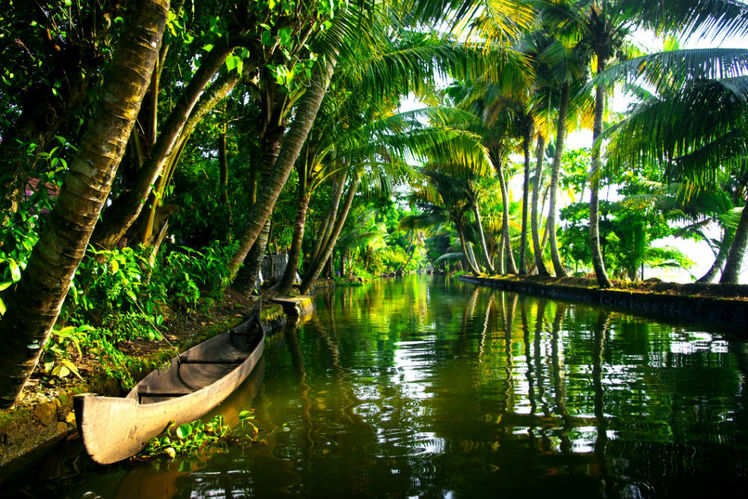According to the United Nations World Tourism Organization (UNWTO),  there will be 1.6 billion tourists worldwide by 2020. Tourism on such a mass scale does not necessarily spell out economic prosperity for the destinations affected by it. In fact, overtourism can lead to cultural deterioration and environmental degradation. In many developing areas, mass tourism is largely shaped and operated by foreign companies. This foreign ownership of tourism organizations has led to the leakage of tourism revenues from local economies and compromised local cultural integrity. Sustainable tourism, implemented both by local organizations and outside tourism operators, is the only effective antidote to the pitfalls of mass tourism.
there will be 1.6 billion tourists worldwide by 2020. Tourism on such a mass scale does not necessarily spell out economic prosperity for the destinations affected by it. In fact, overtourism can lead to cultural deterioration and environmental degradation. In many developing areas, mass tourism is largely shaped and operated by foreign companies. This foreign ownership of tourism organizations has led to the leakage of tourism revenues from local economies and compromised local cultural integrity. Sustainable tourism, implemented both by local organizations and outside tourism operators, is the only effective antidote to the pitfalls of mass tourism.
The Global Sustainable Tourism Council (GSTC), one of the foremost authorities on responsible tourism, sets forth a set of sustainability criteria for tour operators, hotels, and destinations. The criteria focus on maximizing social and economic benefits to local communities while mitigating negative impacts. The GSTC suggests implementing these criteria by purchasing and hiring locally, protecting local natural and cultural sites, and setting guidelines for visitor behavior (Global Sustainable Tourism Council, 2013). Above all, sustainable tourism must seek to empower local communities and provide a livelihood for their residents.
India has wholeheartedly embraced the credo of sustainable tourism, launching the Comprehensive Sustainable Tourism Criteria for India in 2014 (Gaia Discovery, 2016). Upon its launch, Kerala state’s Minister for Tourism Shri Shripad Naik urged tourism stakeholders to not only emphasize environmental sustainability but also to focus on preserving cultural integrity for generations to come (Dorjey, 2014). India’s sustainable tourism efforts have attracted international media attention and set an example for destinations across the world.
Kerala state is one of India’s sustainable tourism success stories. With its natural beauty and rich cultural heritage, Kerala has become a hotbed for tourism. Visitors can take a trip down the winding River Nila, witness as local craftspeople create traditional headdresses, or spend time relaxing at an ayurvedic resort. In January of 2014, Kerala won the United Nations World Tourism Organization’s Ulysses Award, one of the most prestigious tourism awards in the world (Dorjey, 2014). Kerala’s “Responsible Tourism” program, implemented statewide in 2017, has a “triple bottom line” mission of economic, social, and environmental sustainability (Gaia Discovery, 2016). The RT program frames tourism as a tool for community empowerment rather than a revenue-generating business opportunity. Across both rural and urban areas, the RT initiative has helped supplement the livelihoods of Keralites (Gaia Discovery, 2016).
Programs like Kerala’s RT initiative are essential to the sustainable tourism cause because they create a favorable environment for the right kind of hospitality organizations and tour operators. Governmental support and sanctioning are important to sustainable tourism development because they provide much-needed resources and support to tour operators which are often small-scale and locally owned.
While there are many ways to implement sustainable tourism, the most important criterion which should be shared across all sustainable tourism initiatives is that local communities must be included in planning and development. Allowing local communities to play a large role in tourism development is the key to empowerment. Tourism operators across Kerala have mastered this model of partnership. One of Kerala’s most popular tours is the Village Life Experiences package, which allows tourists to spend a day with rural farmers and fishermen (Gaia Discovery, 2016). This tour gives both tourists and rural Keralites a chance to experience a different way of life and perhaps even gain a new perspective on life. Most importantly, rural Keralites are the facilitators of the tour. Allowing tourists a glimpse into their daily lives is in itself a kind of empowerment: it is proof that their way of life is special, unique, and above all, worth sharing. All criteria and guidelines aside, this is the heart of sustainable tourism: empowering and uplifting those who open their communities to tourists.
References:
Dorjey, M. (2014, January 24). Kerala becomes first Indian state to win top UN Award in
Tourism. Retrieved February 28, 2019, from https://www.news18.com/news/india/kerala-tourism-3-664029.html
Gaia Discovery. (2016, October 17). Sustainable Tourism in India: Policies and Practices.
Retrieved February 28, 2019, from https://www.gaiadiscovery.com/latest-places/sustainable-tourism-in-india-policies-and-practices.html
Global Sustainable Tourism Council. (2013, November 1). Global Sustainable Tourism Council
Criteria and Suggested Performance Indicators for Destinations. Retrieved February 28, 2019, from https://www.gstcouncil.org/wp-content/uploads/2013/11/Dest-_CRITERIA_and_INDICATORS_6-9-14.pdf

Leave a Reply
You must be logged in to post a comment.